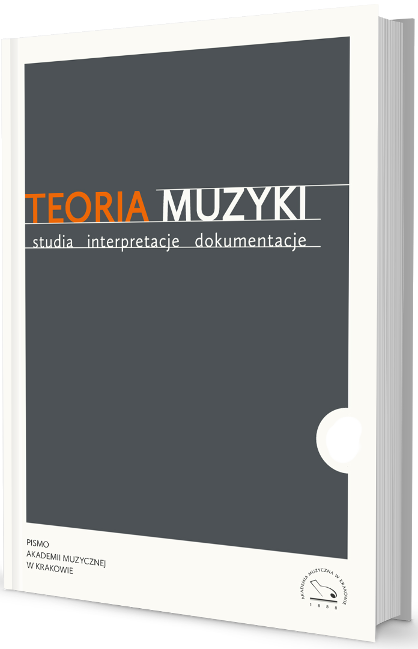Relacje harmoniczno-brzmieniowe w muzyce Witolda Lutosławskiego i utworach sonorystycznych
Relationships of Harmony and Sound in the Music of Witold Lutosławski and in Sonorist Pieces
Author(s): Marcin StrzeleckiSubject(s): Music
Published by: Akademia Muzyczna w Krakowie im. Krzysztofa Pendereckiego
Summary/Abstract: The variety of harmonic phenomena and the emphasis on this aspect on theoretical works are testament to the fundamental significance of harmony in European music. Harmony has acquired the status of a discrete discipline in musical theory. Up to the 19 th century, a reductionist approach dominated: the multitude of acoustic features of tones would be reduced to the single parameter of pitch. The development of empirical research at the turn of the 19 th and the 20th centuries revealed the existence of psychoacoustic elements of musical harmony. Gradually, it began to manifest itself in 20 th -century musical practice, as evidenced by the work of such composers as Claude Debussy, Edgard Varèse, Olivier Messiaen, Giacinto Scelsi or Gérard Grisey.In the light of the above changes, the hypothesis can be formulated that the domains of harmony and timbre (also referred to as tone colour) might have some common ground. It is possible that the theoretical language which relies on reducing musical phenomena to points upon the staves is not an adequate way to describe the subtler aspects of music that stem from the complexity of acoustic and psychoacoustic elements. Attempts to produce such an adequate theoretical language show how necessary it is to bridge the gap between the previously segregated fields of harmony and timbre. The dissolution of clear-cut boundaries between the two will be exemplified with two important items in Polish music of the last quarter of a century: of Witold Lutosławski’s twelve-tone harmonics and of Polish sonorism.The original harmonics of Witold Lutosławski is a clear attempt at a systematic approach to the problems of harmony in the 20 th century. A close relationship of twelve-tone harmonics and timbre in the work of Lutosławski is suggested by psychoacoustic arguments. This is mainly true of his perceptive limitation of audible pitches to only a few; surplus acoustic information is removed into qualities of timbre. This is how, from a technical point of view, Lutosławski’s twelve-tone harmony now manifests itself a system of organizing timbre.Much like any other “avant-garde” trend in the music of the 20 th century, Polish sonorism was quick to negate traditional musical categories, including harmony. All this notwithstanding, the major/minor system of functional harmonics is but one of the many ways to organize harmonic phenomena. In different musical languages, some of the most basic harmonic categories obtain their different realizations that can be understood as harmonic equivalents. This perspective shows that avant-garde sonorist music has more than one feature typical of traditional harmonic phenomena.
Journal: Teoria Muzyki. Studia, Interpretacje, Dokumentacje
- Issue Year: III/2014
- Issue No: 5
- Page Range: 87-108
- Page Count: 22
- Language: Polish

